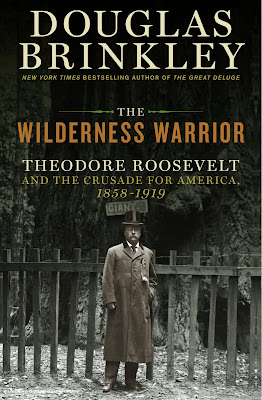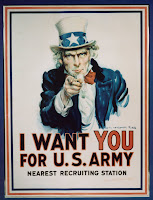 A collection of records from New York State pertaining to American Revolution and Native American policy have been recently scanned from paper copy volumes in the New York State Library collection. The documents are full-text searchable and freely available online as PDF documents on the State Library’s website. The newly available records include documents relating to military bounty lands, and volumes of New York in the Revolution as Colony and State, which was compiled in the late 19th century from available records of the American Revolution.
A collection of records from New York State pertaining to American Revolution and Native American policy have been recently scanned from paper copy volumes in the New York State Library collection. The documents are full-text searchable and freely available online as PDF documents on the State Library’s website. The newly available records include documents relating to military bounty lands, and volumes of New York in the Revolution as Colony and State, which was compiled in the late 19th century from available records of the American Revolution.
The records also include several items related to Native American affairs from the 1940s. Particulalrly those of the New York State Joint Legislative Committee on Indian Affairs, which was established in 1943 “to make a comprehensive study of the rights and obligations of the several tribes of Indians residing upon Indian reservations within the state- to inquire into all treaties, and the nature and extent of the title to lands granted to Indians- and to inquire into all matters relevant to its investigation”.
Revolutionary War materials:
The Balloting Book and Other Documents Relating to Military Bounty Lands in the State of New York
This book contains copies of several acts relative to Revolutionary War bounty lands and the payment given of officers and soldiers for service in the War. An alphabetical listing of the names of soldiers and officers in each regiment is provided and includes the rank and company of the soldier, the township number, the lot number, the acreage, and date of patent. Dead and miscellaneous persons laying claim to land are also listed. The book also contains Lieutenant Michael Collonly’s return of names from Continental Army muster rolls and an accompanying list of names from the return of Colonel John Lamb. Another section of the book provides the number and names of townships in the military tract. The final section lists the names and lots of Canadian and Nova-Scotia refugees.
New York in the Revolution as Colony and State
This publication is a compilation of papers located in the NYS Comptroller’s Department that were arranged and classified by James A. Roberts, Comptroller. The papers included in the volume relate to the services performed by New York in the Revolutionary War, including muster and pay rolls of men serving in the Line, Levies, Militia, and Navy (Privateers). A personal name index and indexes to “sundry persons”, pensioners and applicants for pensions and commanding officers are included in the volume. This 2nd edition was published in 1898.
New York in the Revolution as Colony and State: Supplement
This supplement is a compilation of papers located in the NYS Comptroller’s Department related to the participation of New York State in the Revolutionary War. Included in this supplement is information on aspects of the military and naval service during the War including Courts-Martial, deserters, pay, bounties, pensions, American prisoners of war, hospitals, Indians, fortifications, military Roads, military stores, clothing, provisions, privateers and ships. The volume also includes information on the civil service during the War including the judiciary, the legislature and the executive and executive bodies. This supplement was printed in 1901.
Native American materials:
Hearing before the Joint Committee on Indian Affairs
Thursday, Jan. 4, 1945 at Ten Eyck Hotel, Albany, N.Y., 10 a.m.
This hearing considers federal legislation concerning the criminal and civil jurisdiction of New York State courts over Indian Reservations in New York State. The legislation was intended to end confusion over the extent of federal and state jurisdiction over offenses committed on Indian property within New York State.
Public hearing had at Salamanca, New York Court Room, City Hall
August 4-5, 1943
This hearing was convened by the Joint Legislative Committee on Indian Affairs to gain information on the issues that arose over attempts by New York State to gain and maintain civil and criminal jurisdiction over the Seneca Nation’s Allegany Reservation, which included the city of Salamanca. The dispute arose over the authority of the Seneca Nation to cancel land leases in Salamanca for non payment. The leases had been authorized by Congress to establish villages within the Allegany Reservation.
Public hearing had at Thomas Indian School, Cattaraugus Reservation, N.Y.
Wednesday, Sept. 8, 1943
This hearing was convened by the NYS Joint Legislative Committee on Indian Affairs to gain information on the operation of the Thomas Indian School and problems with its operation caused by the conflict between the federal and state governments over what legal authority has jurisdiction on the reservation and ultimate responsibility for regulating affairs of the school.
Report of New York State Joint Legislative Committee on Indian Affairs
The New York State Joint Legislative Committee on Indian Affairs was established by Senate resolution in 1943 “to make a comprehensive study of the rights and obligations of the several tribes of Indians residing upon Indian reservations within the state- to inquire into all treaties, and the nature and extent of the title to lands granted to Indians- and to inquire into all matters relevant to its investigation”. (New York State Legislative Manual, 1943). Reports were made annually to the Legislature from 1944-1964. In addition, a supplemental report was made in 1959.
 Fans of Adirondack history will want to check out the Adirondack Chronology. The Chronology is a project of the Protect the Adirondacks!’s Adirondack Research Library at the Center for the Forest Preserve in Niskayuna. The Chronology consists of a chronological listing of significant events (natural or human-made) over the years and centuries, back to prehistoric times, that have taken place directly in the Adirondacks or which directly impacted the Adirondacks. The document, available as an online pdf, stretches to more than 300 pages and covers everything from the Big Bang (15 billion years before present) to a sunspot cycle in 2012 and 2013 that is predicted to causing major impacts on global electronics. The Chronology also includes an extensive and useful bibliography of relevant sources.
Fans of Adirondack history will want to check out the Adirondack Chronology. The Chronology is a project of the Protect the Adirondacks!’s Adirondack Research Library at the Center for the Forest Preserve in Niskayuna. The Chronology consists of a chronological listing of significant events (natural or human-made) over the years and centuries, back to prehistoric times, that have taken place directly in the Adirondacks or which directly impacted the Adirondacks. The document, available as an online pdf, stretches to more than 300 pages and covers everything from the Big Bang (15 billion years before present) to a sunspot cycle in 2012 and 2013 that is predicted to causing major impacts on global electronics. The Chronology also includes an extensive and useful bibliography of relevant sources.







